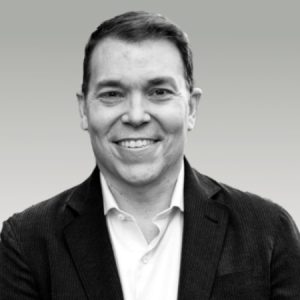
Bruce Feiler
Guest is known for...
Bruce Feiler, an American writer and TV personality, has authored 15 books, including “Council of Dads” which chronicles how he dealt with cancer by asking a group of men to support his daughters. In his latest book, “Life Is In The Transitions”, he explores life stories and offers strategies to cope with unsettling times, earning praise from Adam Grant.
Here's what I will learn...
We discuss life transitions, the three phases in a transition, the power of stories, and more. This conversation provides insights that can help us make sense of life and move forward with intention in a world where transitions are increasing daily.
LISTEN TO THE FULL CONVERSATION
From the Podcast
Bruce speaks about how he was leading a reasonably successful and predictable life till his 40s where he experienced multiple events that shook his world. He was diagnosed with an adult onset pediatric cancer (a 9-inch tumor in his femur), his father tried to take his life 6 times in 12 weeks, his father’s family business almost became bankrupt and his mother went through health challenges. He speaks about how he discovered the power of stories in healing his father’s situation and in making sense of what was going on. That eventually led him to pursue the life story project where he spoke to thousands of people and analyzed all the data with the management thinker Jim Collins and his team.
Bruce speaks about how families can learn from the Agile Development process and ensure that there is a ritual and a space for having a meaningful conversation around what is important to each member and find a way of addressing the issues given the ever changing context.
Bruce speaks about how his research led him to identifying 52 different disruptors that could change our life context across 5 categories – Relationships, Identity, Beliefs, Work and Body. He speaks about how his research suggests that we might go through a disruptor every 12-18 months and how one in 10 ends up being a lifequake. He speaks about how we end up spending half of our adult lives in transition without having any adequate training on how to deal with this.
Bruce speaks about how his research led him to identifying 52 different disruptors that could change our life context across 5 categories – Relationships, Identity, Beliefs, Work and Body. He speaks about how his research suggests that we might go through a disruptor every 12-18 months and how one in 10 ends up being a lifequake. He speaks about how we end up spending half of our adult lives in transition without having any adequate training on how to deal with this.
Bruce speaks about the notion that transitions happen to us all the time and not at a particular stage of life. He specifically talks about the limitations of the transition model espoused by Gail Sheehy who suggests that mid-life transitions often occur around late 30s and early 40s. He goes onto say that voluntary or involuntary transitions could happen at any time in our lives.
Bruce speaks about the criticality of not jumping too early into the process of meaning-making when we go through lifequakes. He says that only when we have completed the processs of transition and when the wounds have dried up are we in a position to weave a narrative through what we have been through.
Bruce speaks about how resilience as a term originates from the Industrial age where our lives were shaped by manufacturing and the paradigms around it. He says that it implies that we sprint back to the earlier status quo. He goes on to say that life and transitions are complex and we rarely go back to the old (as we have seen with the COVID-19 pandemic). He urges us to think about shapeshifting instead. He speaks about how we could use lifequakes to rebalance our lives across 3 dimensions which he calls ABC (Agency, Belonging and Cause)
Bruce speaks about the three stages of a transition (the long goodbye, the messy middle and the new beginning). He goes onto say that each one of us has a super-power in one of these three and are likely to be good at coping with that stage of the transition.
Bruce speaks about the criticality of taking the plunge after shedding our past to explore new possibilities. He links it to what we see in some of the greatest stories that have been told across religions. He goes onto say that growth actually occurs when we feel the discomfort when we go through change, much like how we build muscle when we go to a gym.
Bruce speaks about how we live in world today where there is an opportunity for us to architect a life that’s resonant with what matters to us. He urges to be more open about taking cuts in compensation in the short run for us to pursue what we really love.
